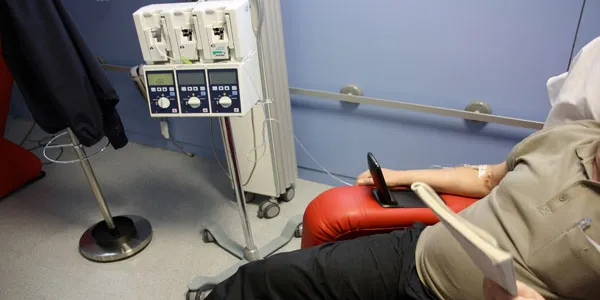The cardiac damage caused by chemotherapy is worse in cancer patients who also have diabetes, according to an investigation presented in EUROCHEHO -IMAGING 2016, the annual meeting of the European Association of Cardiovascular Images (EACVI) -a branch of European societyof cardiology (ESC)-, which was held until this Saturday in Leipzig (Germany).
Ana Catarina Gomes, a cardiologist in training at the García de Orta hospital in Almada (Portugal), indicates that "there is more and more speak of cardiotoxicity induced by chemotherapy with anthracyclines, mainly because now a lower proportion of patients dies of cancer."
In addition, he points out that “in the coming years this cardiotoxicity seems to increase the load of heart failure in cancer survivors.The good news is that cardiotoxicity can be reversible in the early stages before important heart failure occurs. ”It also emphasizes that surveillance programs, such as those carried out in their hospital, are very beneficial.
The objective of the research was to study the factors that could affect the probability that patients have damage to the heart after anthraciclin treatment.The researchers evaluated the impact of each risk factor on changes in echocardiographic data from the baseline to follow -up.
The study included the 83 patients of the surveillance program -54 had breast cancer, 20 lymphoma and 9 gastric tumors -, of which demographic data, cardiovascular risk factors (hypertension, diabetes mellitus, dyslipidemia, smoking), diseases were taken, diseases), diseasescardiovascular and non -cardiovascular previous and type and cumulative type of anthraciclin.
Of the total patients, 39 were treated with doxorubicin and 44 received epirubicin.Patients were 52 years on average (in a range of 39 to 65 years) and 78% were women.31% had hypertension, 7% were also suffering from diabetes, 16% had dyslipidemia and 16% were smoker.
The echocardiographic evaluation included the dimensions of the cardiac chamber, the systolic and diastolic function, the ejection fraction and global longitudinal deformation.Measurements were performed before starting chemotherapy, during treatment and after finishing chemotherapy treatment.
The results showed that the global longitudinal deformation and the ejection fraction of the left ventricle and were significantly lower after chemotherapy compared to the baseline.Patients who had diabetes recorded a greater decrease in global longitudinal deformation during treatment, despite presenting basal levels similar to non -diabetics and, in general, hypertension patients showed a tendency towards greater reductions in the ejection fraction.
Gomes states that “subclinical reduction in global longitudinal deformation is an early predictor of heart failure and was particularly pronounced in patients with diabetes.It is possible that the tendency to a greater reduction in patients with hypertension can become statistically significant in a broader study. ”
Breast cancer patients had milder cardiotoxic effects compared to those with gastric cancer or lymphoma.However, in the middle of the treatment they presented better systolic function while after the first cymotherapy cycle they had a lower decrease in the ejection fraction and a better diastolic function.
“We have the hypothesis that the cancers themselves could have direct cardiotoxic effects induced by the cytokines.These cardiotoxic effects can vary with the type ofCancer, ”according to Gomes.
And he concludes by saying that “cancer patients should strictly control cardiovascular risk factors with changes in lifestyle and, if necessary, with medication.But, of course, cardiovascular prevention should never postpone the beginning of chemotherapy, since cancer treatment is the first priority. ”


